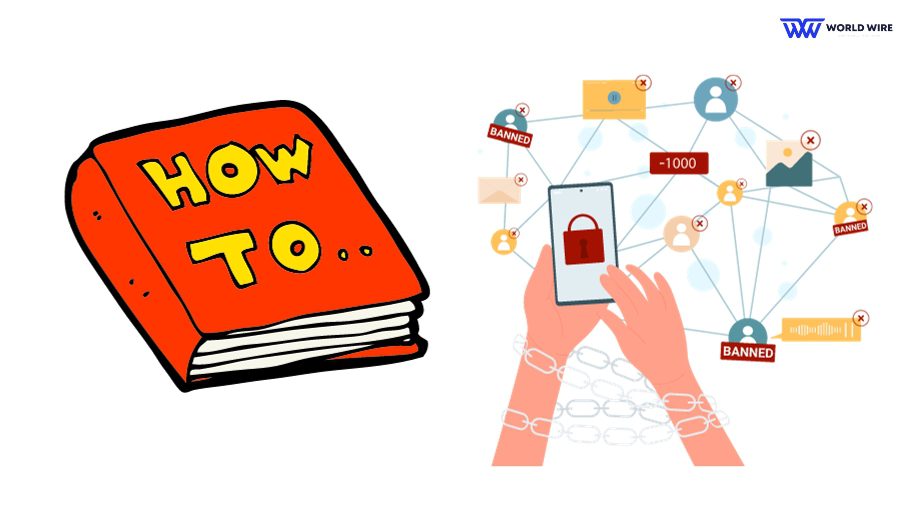Are you sick of receiving that marketing text but know little about what Text Mail Subscriber is and how to deal with it? If yes, then you have stumbled upon the right article.
As someone who has been receiving marketing texts for many years, I understand that they can be very annoying and, if clicked on incorrectly, dangerous for your private data.
However, after searching for a solution online, I finally found multiple ways to fix this issue and could control those texts up to 70%.
So, with this article, let me share my experience dealing with a Text Mail subscriber scam and other relevant information.
What Is a Text Mail Subscriber?
A database of phone numbers in the United States claiming consent to receive promotional texts from businesses is called a text mail subscriber. A text mail subscriber is a user who sends text messages through a web service rather than using conventional mobile services.
Marketers and companies use these text mail lists to send announcements, solicitations, and other messages through SMS to consumers’ phones. These lists are assembled, after which they are rented or sold to other companies wishing to use text messaging to advertise their goods or services.
It’s unclear how authorization was obtained for the numbers on these lists. People frequently unintentionally sign up for a single text update service but wind up on lists circulated among digital marketing networks.
Why would someone use a text mail subscriber?

Here are some reasons for using text message lists by organizations and marketers:
Reach
Through text messaging, they enable businesses to immediately get in touch with a sizable number of prospective clients. Research shows that texts are more likely to be opened than emails.
Targeting
Text Mail Subscriber lists can be targeted based on demographic data such as geography, interests, and past purchases to help convey the correct messages to the right individuals.
Convenience
Texts can be viewed even when someone is not near their computer. It’s a practical approach to notify or remind clients.
Low cost
It is less expensive to send bulk SMS messages using subscriber lists than to text each contact individually. Lists can also be bought or rented in bulk.
Response
Consumers are more likely to reply to a text than click a link in an email; texts frequently elicit a faster reaction than other channels.
Metrics
Text platforms include information on clicks, read receipts, and delivery rates that may be used to calculate the ROI and efficacy of a campaign.
How Do Text Mail Services Work?
Businesses can use text mail subscriber services to deliver marketing texts to massive databases of phone numbers. Various approaches are used to compile these numbers into lists.
Some frequent methods include web forms, app permissions, call centers, and so on, where consumers may opt-in to receive promotional messages without realizing how much information they are revealing.
The marketer enters their message and target phone numbers into the text messaging platforms. The software divides the numbers into groups based on network carriers and sends the texts in chunks to avoid flooding networks.
They also track message delivery opens and clicks. If you respond with STOP, your number will be silenced on that campaign and may be unsubscribed from future messages.
Analytics assist marketers in understanding performance and optimizing future efforts. Text mail services simplify bulk texting, but the legality of customer consent to be included on the lists remains in doubt.
How to Track a Text Mail Subscriber?

Marketers can track contacts within a text mail subscriber list in various ways. For starters, text messaging providers include delivery reports that confirm the amount of messages sent and delivered, as well as interaction metrics such as opens and clicks. It aids in determining the efficacy of the campaign.
Tracking can also take place via embedded links in text content. When a contact hits a link, their phone number is logged, and interaction data is provided.
Some platforms additionally allow you to append unique tracking numbers to URLs. Tracking is now possible across various campaigns and devices.
Responses such as STOP requests and answers can also be automatically logged. Tracking technologies allow the creation of profiles for subscribers based on their interaction with texts over time, including their location, device type, interests, and purchase history.
When combined with first-party data, this data helps improve future campaign targeting. However, tracking subscriber behaviour creates privacy concerns due to the dubious permission involved.
How to Identify Who the Text Mail Subscriber Is
Determining who the text mail subscriber is behind unsolicited marketing texts can be difficult. However, here are some methods you can try to figure out who is the text mail subscriber:
- Examine the text sender ID. Legitimate businesses will identify themselves, but scammers may employ random numbers or letters.
- Respond “Who” or “Who is this?” to initiate an auto-reply with the name of the firm or organization, and then, you can look for them online to know who the scammer is.
- Look for any links or phone numbers in the text. Searching for them in reverse may show the marketing campaign or SMS provider.
- Look up the phone number on the internet to see if it has been marked as spam by others who have gotten similar texts. Suspect subscribers can be identified through complaint forums.
- Examine your call logs and internet accounts for any recent opt-ins that may explain how your phone number ended up on their list.
- Report the phone number to the National Do Not Call list at “https://www.usa.gov/,” which may aid in identifying repeat offenders.
What is a text mail subscriber scam?
A text mail subscriber scam entails fraudulent techniques some businesses and organizations employ to get phone numbers and add them to marketing lists without their knowledge.
Some frequent scams involve duping customers into opting in under pretenses, such as misrepresenting marketing SMS as security alerts or package upgrades. Individuals are unaware of how much their information is shared since fine print or ambiguous disclosures are employed.
Numbers can also be obtained via leaks or data breaches and sold on illegal markets. Scammers can use spoofing technologies to hide their true identity when sending messages.
It can be difficult to unsubscribe from repeated mailings once you’ve joined a list. Some frauds employ lists to specifically target vulnerable demographics, such as elders, with phishing links or to promote unsafe products.
Regulators are working to prevent illegal behaviours, but many frauds continue to exploit loopholes in do-not-contact guidelines.
How to Block a Text Mail Subscriber

There are a few steps someone can take to block unwanted text mail subscribers from a subscriber list:
- Reply “STOP” to the message. It should opt a number out of future texts from that specific campaign.
- Contact the text sender company directly via phone or online to request being removed from all lists in their possession.
- Check phone settings for spam filters and block options. Both iPhone and Android allow blocking individual numbers.
- File a complaint with the national Do Not Call registry. Provide details of the unsolicited texts and the responsible company if known.
- Changing one’s phone number may be necessary as a last resort, especially if the same spam texts continue.
- Consider downloading apps that screen unknown numbers on behalf of common spammers and scammers.
- Check permissions given to apps and be wary of forms that request phone numbers for marketing updates.
Text mail subscriber scam example
Here’s one example that will help you understand what is a text mail scam and how individuals might get caught up in one:
“Your Amazon order has been delayed,” Sally received a text message one day. Please reschedule delivery by clicking here.” She clicked the link, believing it was a legitimate communication from Amazon. It sent her to a webpage where she was asked to verify her phone number for processing the delivery details.
She entered her phone number without realizing she had just joined an SMS marketing list.
Sally began receiving several spam texts daily for the following three weeks, pitching dubious items and services. They were from companies she had never heard of. When she responded “STOP” to one, the messages continued to arrive from different numbers.
She searched online and discovered numerous complaints about a fraudulent marketing network that duped individuals using Amazon-branded SMS. They were actively reselling numbers obtained from these “verification” sites. Sally realized a text message subscriber scam had duped her.
If caught in a similar situation, you can simply register complaints with law enforcement and regulatory authorities such as the FTC, providing details about the fraud network.
FAQs
What should I do if I receive unsolicited texts from a subscriber list?
Reply “STOP” to opt out of future messages from that campaign. You can also report the number to the Do Not Call registry.
How do companies get my phone number for these lists?
Numbers are often obtained through online forms, app permissions, data leaks/breaches, etc., but the validity of consent is questionable in many cases.
Is it legal for companies to send marketing texts without my permission?
No, telemarketers must express written consent before sending promotional texts. However, consent standards are often murky with subscriber lists.
How can I prevent my number from being added to these lists?
Be wary of sharing your number unnecessarily. Review app permissions and read privacy policies carefully before opting into any programs.
What should I do if a text subscriber scam targets me?
Contact the sender directly and request removal. You can also change your number as a last resort, especially if spam texts continue despite opting out. Moreover, you can consider filing an FTC complaint.
Wrapping up
Text message subscriber lists present challenges regarding obtaining customer authorization and sharing contact information. While they offer commercial advantages, there are serious privacy issues related to a lack of transparency and the possibility of misuse through unethical practices.
In this modernized world, individuals should exercise caution when providing personal information and double-check where they opt-in. Also, if you are caught in some scam or fraud, do not forget to report the issue and take necessary actions.
Table of Contents







Add Comment